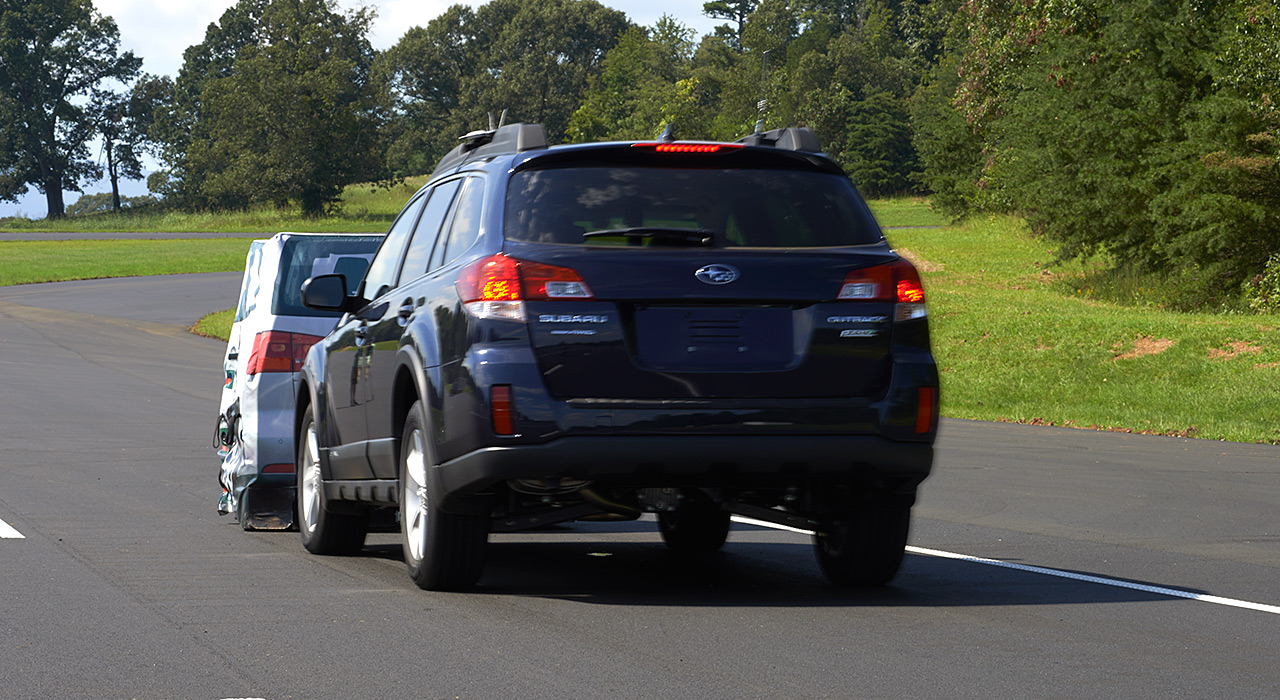Crash tests and other evaluations conducted at the Vehicle Research Center in Ruckersville, Va., encourage auto manufacturers to make safer vehicles. The Institute's vehicle ratings program has helped consumers pick the best models since 1995. Outside of automakers' proving grounds, few places in the world are equipped for the range of tests that we conduct here. With the help of our supporters in the insurance industry, we recently expanded the VRC so we can evaluate crash avoidance systems all year round. Our goal is to encourage adoption of the most effective technologies
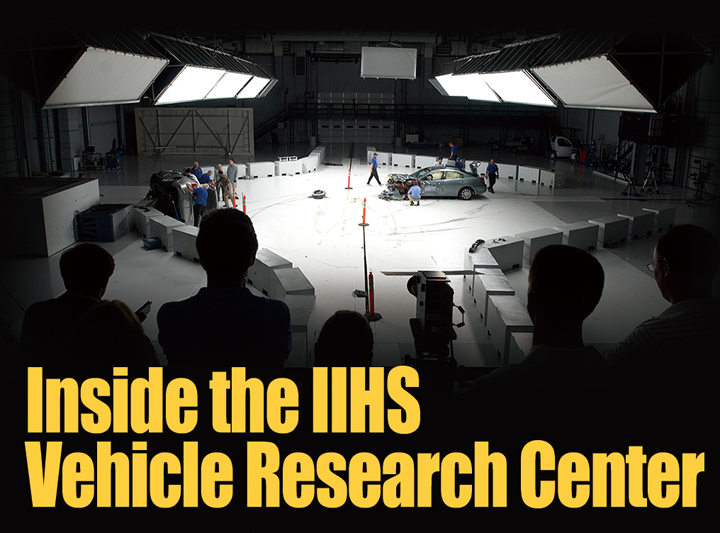
The VRC's 22,000 square foot crash hall has three runways to accommodate front and side tests replicating crashes into another vehicle or fixed object. The cavernous crash hall can even handle tests involving a parked tractor trailer. We conduct 50-70 crash tests each year, and representatives from auto manufacturers are welcome to watch.
Apart from crashing real vehicles, we have used the runways to evaluate new technologies such as adaptive headlights and rear view camera systems.
We use specially designed crash test barriers when we evaluate how vehicles protect people in front and side impacts. In the moderate overlap front test, a fast moving vehicle strikes a deformable barrier made of aluminum honeycomb that crushes like a real car would in a crash. It's mounted to a larger barrier that's 320,000 pounds of steel and concrete.
In the small overlap test, we use a 5 foot tall rigid barrier with a radius of about 6 inches representing the outer corner of a car or a tree or post. The test vehicle strikes the barrier at 40 mph.
In the side evaluation, the test vehicle is parked and the barrier itself moves toward it at 31 mph. The 3,300 pound barrier strikes the driver's side of the vehicle. The barrier's face is shaped to simulate the typical front end of a pickup or SUV.
We also perform vehicle-to-vehicle crashes, mostly for research purposes. An especially memorable crash test was the one we conducted for the 50th anniversary of IIHS. The Sept. 9, 2009, crash featured a 1959 Chevrolet Bel Air versus a 2009 Chevrolet Malibu in a moderate overlap front test at 40 mph.

Beneath the crash hall floor is a propulsion system that can accelerate full size pickup trucks to 50 mph on the VRC's two 600 foot runways. Speeds up to 25 mph can be reached on a 200 foot runway situated perpendicular to the longer ones. The propulsion system, the first of its type in North America, uses compressed nitrogen to run hydraulic motors that, in turn, drive the cables that tow the vehicles to their designated impact speeds.
Just before the countdown begins for every test, bright light floods the crash hall. The lighting system provides up to 750,000 watts of illumination without glare, perfect for capturing digital video and still images at multiple angles. Onboard cameras and additional ones positioned in the crash hall record the key footage that helps us assess vehicle performance and share the story with media outlets worldwide.
Photographers take detailed before and after photos of vehicles in a special studio equipped with a turntable that floats on a cushion of air to display vehicles from various angles.
Nearly every crash requires a test dummy to help engineers understand what would happen to a person if they were in a similar crash.
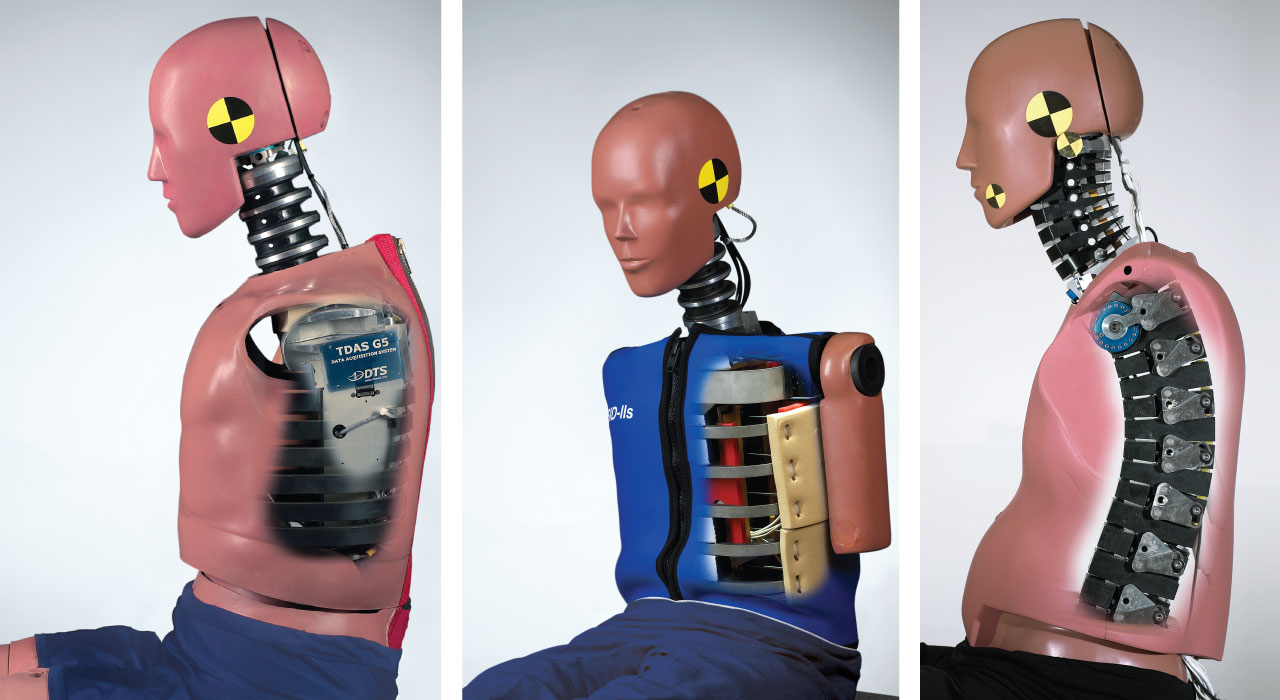
So far, no single dummy is sufficiently humanlike to be used in all crash tests. IIHS uses three types of dummies for front, side and rear tests. We also have different sizes, ranging from a 6-month-old infant to a 95th percentile man. A fully instrumented dummy costs about $200,000.
Our workhorse dummy is the 50th percentile Hybrid III male. He's 5 foot 10 and weighs 172 pounds and is used in our frontal test programs.
SID-IIs is the dummy we use for side tests. It's the size of a 5th percentile woman or average 12-year-old child.
The dummy we use for rear tests is called BioRID. He has articulating vertebrae and reacts very much like a human would in a rear crash.
A dummy's sensors measure forces on and acceleration of the head, legs, feet and other body parts. Sensors also measure deformation of the chest. Engineers compare these measurements against values of stress and strain known to exceed the strength of human bones and tissues to determine how a real person might be injured.
Since dummies are made of metal and plastic, they must be calibrated to ensure they will react like a human would in crashes. Calibration is also important for consistency of results and ensures our dummies perform the same as dummies used in other test labs.
A little makeup comes into play, too. Before each test, technicians apply grease paint to the dummy's face, hands, knees and shins. During the crash, the paint rubs off wherever the dummy contacts the airbags, dashboard, doorframe or other vehicle parts. The tell tale marks help engineers understand how the dummy moved during the test. The dummy's head has been known to move outside the driver window in some particularly poor performing vehicles, leaving paint marks on the barrier or striking vehicle.
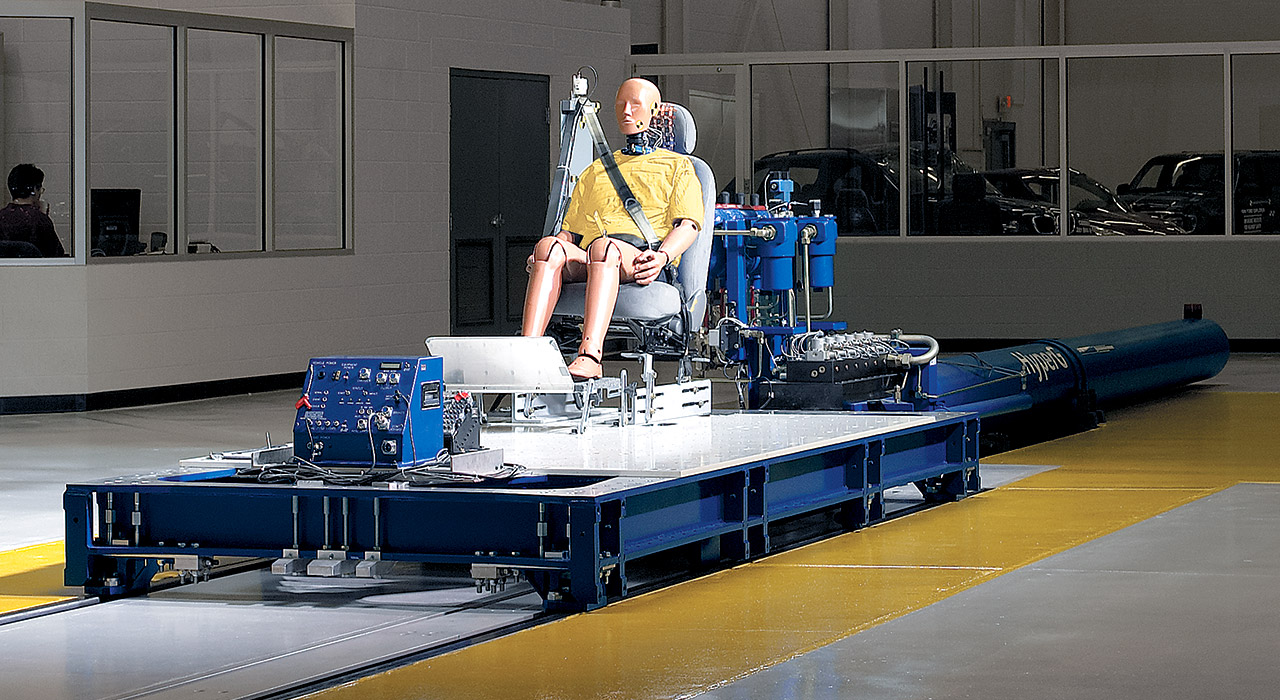
Tests don't always involve crashing entire cars. Components like head restraints and car related gear such as child restraints can be tested on a sled that runs on fixed rails to simulate a crash.
The components are attached to the sled, and, for most tests, dummies are positioned in or on the components. Then the sled is programmed to create accelerations mimicking those in a vehicle's occupant compartment during the fraction of a second of a real world crash.
The sled can be programmed to simulate a range of crash types at both high and low speeds. This method is useful to study components whose performance in a crash wouldn't be influenced by the deformation of the vehicle itself. When crash forces alone are sufficient to evaluate a component, sled tests make sense because they're less expensive and easier to set up than full scale vehicle tests.
One important vehicle test conducted at the VRC doesn't involve any kind of crash, real or simulated. To measure roof strength, IIHS uses a roof crush machine with hydraulic cylinders that press a metal plate into one corner of a vehicle's roof at a constant speed. The plate moves about an eighth of an inch per second. The maximum force sustained by the roof before it caves in five inches is compared with the vehicle's weight to find the strength-to-weight ratio. This is a good assessment of vehicle structural protection in rollover crashes.

The Institute evaluates booster seats at the VRC to assess which models are likely to provide good lap and shoulder belt fit in a range of vehicles. Engineers use a specially outfitted crash test dummy representing an average size 6-year-old child. For any given booster seat, the engineers measure how the safety belts fit under four conditions spanning the range of safety belt configurations in vehicles. Child restraint manufacturers sometimes try out new designs on our test fixture to see how their seats would rate.
Work on our 15 acres of outdoor track focuses on crash avoidance technologies. In the past, IIHS researchers have used track tests to demonstrate the effects of antilock brakes and electronic stability control. Since 2013, Institute engineers have been testing vehicles' automatic emergency braking capabilities for our front crash prevention ratings. Recently, researchers have been looking at how well such systems recognize pedestrians. Evaluations of headlights, including advanced systems that swivel in response to steering, are planned for the near future.
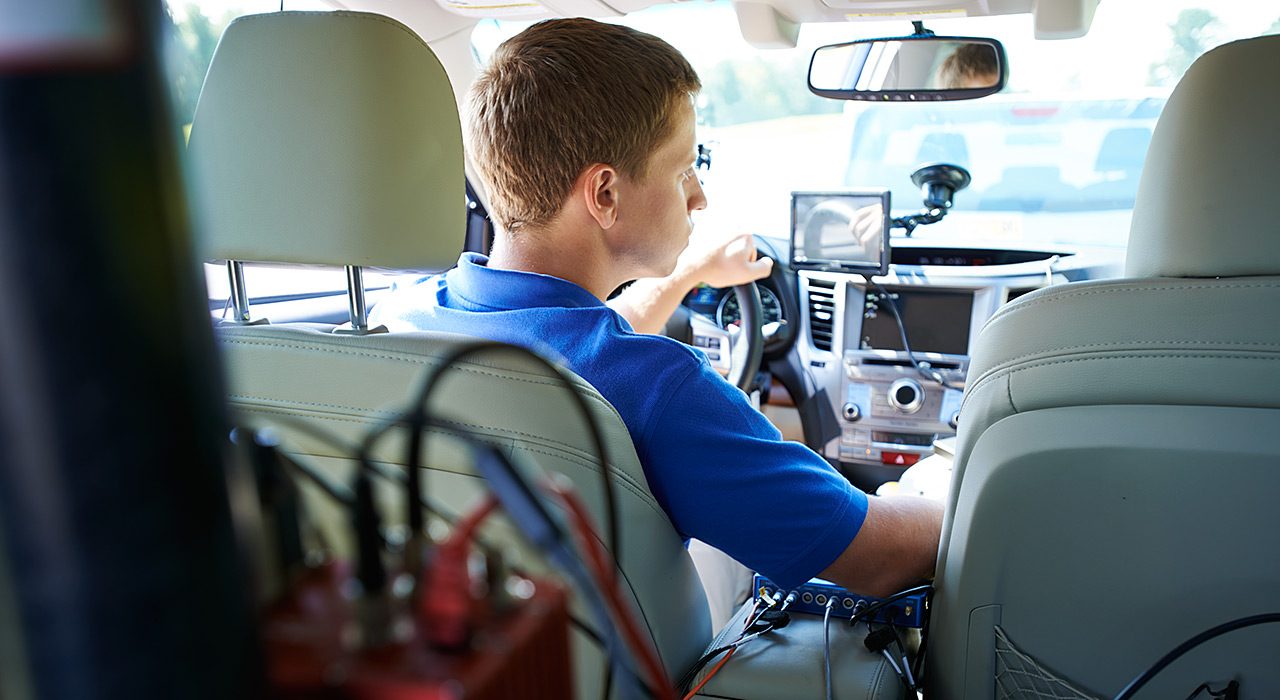
In September 2015, IIHS completed a major expansion to accommodate more research on crash avoidance systems. The original 1,000 foot long track was expanded to allow more space for high speed maneuvers, and a brand new 300 by 700 foot track with a 115 foot-high steel and fabric roof was built. The covered track gives IIHS the ability to run tests year round in any kind of weather.
The new focus on crash avoidance has also required new equipment. IIHS worked with Perrone Robotics to develop a system for testing crash avoidance technologies.
The system includes drop in autonomy kits which can be installed easily in vehicles to mimic normal driving by humans and provide precise control of steering, speed and braking. This allows vehicles to be "driven" the same way each time to ensure repeatable test results. In addition, our test vehicles need to be able to crash without striking a real vehicle. Low profile target robot vehicles can be paired with soft dummy vehicles to stand in for other traffic in various test scenarios. Both types of "robot drivers" are guided by onboard sensors and information from ground based beacons. The system operates similarly to GPS navigation.
